Diamonds come in lots of colors but are actually graded for the absence of color. The lesser the color, the better the color grade and the higher price a diamond can command. Learn about the different color grades and which grade you should buy.
Diamonds Fall into Color Categories
As diamonds can exhibit a range of color, they are divided into 5 general categories for easier classification. These categories range from “Colorless” to “Light Yellow”. Our focus is on the first two categories as those are the most popular with online retailers. These categories are colorless and near colorless. Each category, in turn, is made up of a series of color grades represented by a lettering system from D to Z. The letter represents the amount of color present in each diamond when graded by a gemologist.
As an example, a colorless diamond with D color grade is the best grading value that can be obtained as the diamond is totally free from color. A diamond with a near colorless J color grade, on the other hand, exhibits a small amount of color giving it a slightly warmth in tone. This difference in color, while almost imperceivable to the eye, translates into a very perceivable difference when it comes to price.
How to Pick a Color Grade
When purchasing a diamond, the general rule of thumb is to buy a diamond with the least amount of color as your budget allows. This being said, there are several ways to save money – the first of which is buying towards the lower end of a color category. For example, buying this 0.80-Carat Round F color diamond ($2,843) instead of this 0.80-Carat Round D color diamond ($3,196) will knock a few hundred dollars off the price while still allowing you to confidently say the diamond is colorless. The second (and best) way to save money is to shop in the near colorless range. Because the difference between color categories is so small, it’s very difficult to tell a colorless diamond from a near colorless diamond. Here’s what we mean. Take a look at the two stones below.
One of these stones is an E color, Ideal Cut, VS1 Clarity, 0.80-Carat Round and the other is a J color, Ideal Cut, VS1 Clarity, 0.80-Carat Round. The price difference between them is a little over $1000 USD. Can you tell which one is which? In truth, most people who admire a diamond can’t tell the difference – especially given that fact that the diamond will be much much smaller than what’s on your screen (about 6.0 mm in size) AND not side by side with another diamond. For these two reason, buying in the near colorless range is a great choice!
How Diamonds are Graded:
Diamonds are graded for color face down, against a white background. Graders are looking at the actual body tone (hue) of the stone and comparing it to a reference set of master stones graded by the Gemological Institute of America (GIA). The diamond is then assigned a letter grade as seen on the chart above. The GIA grades color alphabetically from D (totally colorless) to Z (yellow). Because the D-Z scale is continuous, the difference between grades is very small. Most diamonds used for jewelry purposes fall into the Near Colorless Category – G to J. Anything below J color should be avoided.
Colorless Diamonds (D-F)
Diamonds in the colorless range are the most valuable as they are the most rare in nature. Diamonds with D/E color are completely colorless whereas F color diamonds show a minute trace of color, detectable only to a trained gemologist. To an average person, an F color diamond will look identical to a D color diamond.
Near Colorless Diamonds (G-J)
Like their counterpart, Near Colorless (or “face white”) diamonds appear colorless when viewed from the table (face up position). It is only when viewed from the pavilion (face down position) do these diamonds show a slight amount of color against a white background. The slight tint of color is masked by the brilliance when viewed through the table. As diamonds are mounted face up in a setting, a near colorless diamond will appear identical to a colorless diamond (to the untrained eye). Because of this, near colorless diamonds offer superb value for your money.
How a Diamond’s Color Grade Affects its Price
As with all diamonds, the rarer the diamonds the higher the asking price for it. The same applies for diamond color. A diamond color grade of D is only awarded to rarer, totally colorless diamonds. As such, colorless diamonds are more expensive than light yellow diamonds. The further you move down the spectrum of color, the lower the asking price for the diamond. In order to make good use of your budget, we recommend selecting a diamond in the H-I color range (or J if going with yellow gold). This gives you a stone which appears colorless without having to pay extra for it being truly colorless.
Now that you got the theory, let's look at some real examples
Near Colorless Diamond Range (G – J)
The first thing to notice here is that the difference between colorless (above) and near colorless (below) is imperceivable to an average person. From a cost perspective, the difference can be substantial. This is why “near colorless” is the range we recommend shoppers buy from. Shoppers can get a colorless looking stone while saving money which can be spent on other aspects of the diamond ring.
How Lighting and Photography Affect Color
Colors Grades Carried by Online Diamond Retailers
When purchasing a diamond for an engagement ring, it’s important to note that many online retailers who hold themselves to a higher standard only carry “Colorless” or “Near Colorless” diamonds. Anything outside of these ranges may be carried but sold as “Fancy” colored diamonds.


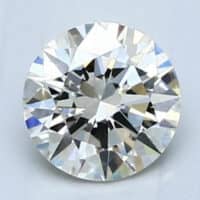
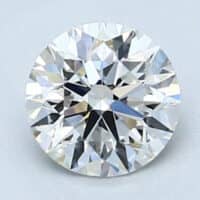
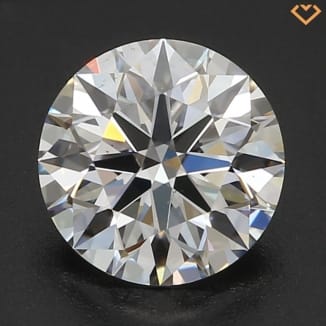
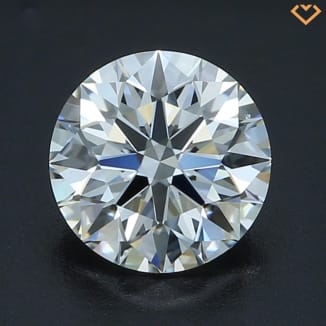
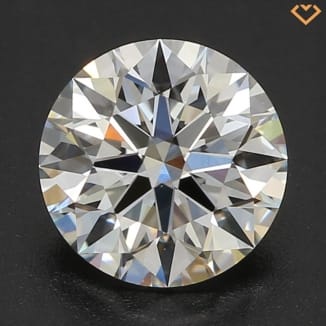
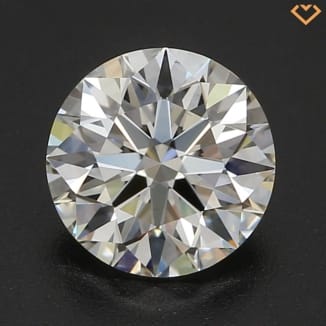
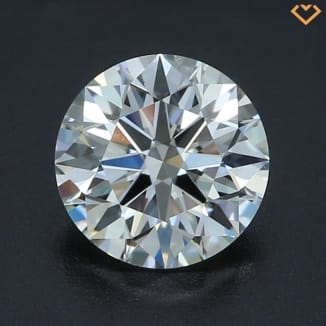
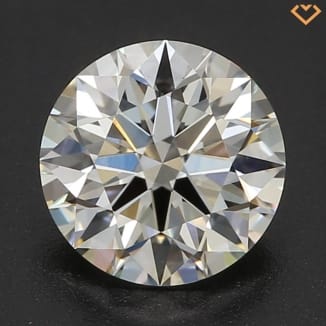
I suggest to stay clear from diamonds with I clarity. I’m not certain where’s your physical location but try to look for diamonds with SI1 clarity and you might get away with H or I color set in yellow gold
Hi Kiera,
Regarding the ring you describe, I would say it’s a touch on high side for what you are getting. Based on what you’ve said, you’re getting just under 1CTW (.96 total carat weight). If I look at something simliar:
https://www.jamesallen.com/wedding-rings/womens-anniversary/14k-yellow-gold-five-stone-wire-basket-ring-1-ctw-item-60536
Style aside, this particular ring retails for $3,877 CDN. Given it’s about the same price point as yours, the one thing you’ll notice is that the clarity and colour are higher than yours. A clarity grade of I1 is lower than I’d recommend as you run the risk of large inclusions which negatively impact the light performance. Given the stones small size, you want to ensure good light return which helps the stone look larger (and move lively).
One piece of advice I can offer, have a look at channel settings with more stones but the same total carat weight (i.e. 7 stones for 1 ctw). Because each stone is smaller, the overall price comes down without changing the total carat weight.
14K yellow gold ladies ring with a row of 5 channel settings across the top . Each setting contains one round brilliant diamond. Two diamonds measure 3.25 mm in diameter and weigh approximately 0.15cts each , and three diamonds measure from 3.75mm to 3.96mm in diameter and weigh approximately .22cts . The clarity grade of the diamonds is 11 with a color grade of H . The total weight of the ring is 4.3 grams .
Can you give me your opinion on this please? they are asking $3500 CDN.
THANK YOU!!
Kiera
Hi Mark,
Unfortunately I not familiar with Dynasty Jewelry mainly because there are so many players (online and retail) in this space. Because you’re in Texas, have you considered Whiteflash? They are out in Sugar Land (about 30 miles from Dynastry) and are one of the big online retailers we usually send our readers to (the others being James Allen, and Brian Gavin).
In terms of buying a stone, the most important thing is the cut. Never skimp out on cut. With a limited budget (for a 1 carat), you can play around with the colour, and clarity but never the cut as a poorly cut stone can actually appear smaller than a similar stone of same carat weight.
Let me know if you decide to go the Whiteflash route and I’ll put some recommendations for you from their site. Otherwise, I’ll put from my usual sources. A few questions to help me out:
(1) What color gold do you have in mind? Yellow gold or white gold?
(2) Do you have a type of setting in mind? This gives me an ideal of the prong positions (helpful when trying to hide an inclusion and maximize budget).
Let me know. Cheers.
Hello Sir, I’ve just begun shopping for a diamond ring for my wife 30th Anniversary ring I’m thinking about buying a loose diamond I’ve been talking to a guy on the computer Jerry Zaid from Euston Texas the family owns Dynasty jewelry and also loose diamonds strange. Com I was wondering if you ever heard of this man and his company and what you think of them if you have I’m looking for a diamond that is approximately 1 Karat and the more I read the more confused I get I had between 3 and $4,000 to spend on a loose Stone and I’m trying to get the best bang for my buck very hard for a Layman such as myself any advice would be greatly appreciated thank you dear sir and have a great day
Hi Cristina,
The first thing that raises doubts is the fact that you’ve described the diamond as having a color range. At VS clarity, it’s unlikely that there should be dark area (I’m assuming you’re referring to an inclusion). If you could share the certificate, that would help pin point things.
Hi Ken,
I find Blue Nile very interesting site and I would appreciate a feedback from your side concerning a present that I have bought.
I have purchased a present ring together with a friend for his girlfriend and we’ve got from the seller a certificate ( not international) of GH color, VS clarity, .22 ct. The models is nice and very fine worked, but seems that the diamond has a small dark area that can be seen by naked eye, on a side. The question is : can this diamond be VS clarity, under this circumstances ?! I have doubts, according with the info that I found here..
Thank you in advance for your opinion.
Ken,
Do you have a diamond certificate? There are a lot of details that influence the value of a diamond and a cert is the best way for me to provide you some feedback. The cert would have information such as cut, diamond proportions, symmetry, exact color, etc. Without this information, I wouldn’t be able to give you any insight.
On a separate note, I’d caution thinking about a diamond as an investment. The reason for this line of thinking is that investments typically have a life span. You buy, you wait, and then you cash out. Unless you plan on selling the diamond then it’s not really an investment. Also, SHOULD you sell the diamond, you would have a hard time actually getting the full value of it. Think of it as a new product on eBay. You know it’s worth $100 new, but would never actually pay $100 for it on eBay. Just some food for thought!
Im very curious about the value of my diamond ring I purchased for my wife it is .58 carats it’s clarity as “I”near colorless and it’s 14 karat white gold. I purchased this diamond for around $2400 and the seller told me the value would go up as the years pass, it’s been 3 years and am curious to know 1 if it was a good deal in the first place and 2 if the value has increased in the past 3 years?